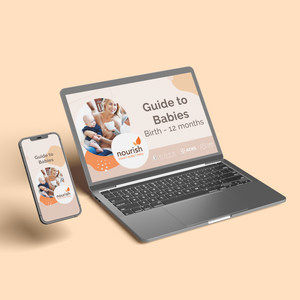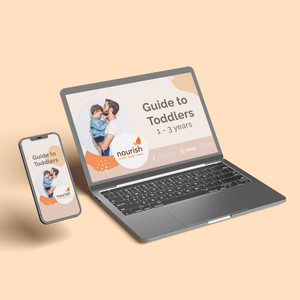Key Points:
- Pregnancy is divided into three trimesters, each lasting three months, but many use gestational weeks for accuracy.
- Weeks 1-12 mark rapid developments, from a two-cell zygote to a fully formed baby by week 12.
- The second trimester sees continuous growth, with developing features like nails, eyelids, and hearing.
- From 37 weeks, the baby's lungs are mature, and at 38 weeks, they are considered "term" and ready for birth.
Pregnancy is generally divided up into three stages known as trimesters – the first, second and third. This makes sense because each three month trimester totals a full nine months. Some people believe that humans should actually have a fourth trimester of pregnancy but because of the relatively small size of a woman’s pelvis, giving birth would become impossible.
Not to mention tolerating another three months of being pregnant!
Maternity care providers and mothers often refer to gestational weeks, rather than months. So many changes occur week by week during pregnancy that classifying weeks of gestation helps with accuracy.
But I’m Really Special!
Of course, every mother and her baby are unique and individual. None are exactly the same. But most pregnant women and their growing baby go through similar experiences and development.
It can be helpful to know what is normal and what may not be.

The First Trimester
Babies start as a two cell zygote with all the genetic information they need to become a unique little individual. One cell comes from their mother (the ova) and the other from their father (the sperm) -so an equal 50% genetic inheritance from both.
Incidentally, fathers ALWAYS determine the baby’s gender.
Almost immediately after conception, the two cells start rapidly dividing until, by around 12 weeks their body is fully formed. All that needs to happen is for the baby to become bigger, fatter and more developed, and subsequently, capable of independent life.
Just Where did I get Pregnant?
Conception usually happens in one of the fallopian tubes and women are not aware exactly when it’s happened. It takes around 6-12 days for the fertilized egg to travel down the fallopian tube and settle into the wall of the uterus where it stays for the next eight months.
Folate - Not to be Forgotten
A maternal diet rich in folate reduces the risk of having a baby with a neural tube defect. Currently in Australia around 30% of pregnancies are unplanned so it makes sense for women of childbearing age, and when planning a baby, to become more aware of their folate intake and start taking folic acid supplements.
Because the 1st trimester is when all your baby’s development occurs, it makes sense to break it down into weeks. Although you won’t see much happening, be assured there’s a lot going on.
First Trimester Development
Your baby’s formation - week by week
Weeks 1-2 |
Conception |
Week 3 |
This is when implantation generally happens. Your baby will be forming its heart, brain, spinal cord and digestive tract. (See comments above re folate/folic acid supplements). |
Week 4 |
Your baby is tinier than a single grain of rice. However, each of its cells is already programmed to fulfil a specific body function. This is what’s known as cell specialisation. |
Week 5 |
You might be able to see your baby’s heart beat on an ultrasound. Your baby’s eyes and ears are forming. Small buds of tissue will eventually become their limbs. |
Week 6 |
Your baby’s lungs, palate and jaw are starting to form and they look a little like a small tadpole. This is an important time in your baby’s development. Be careful about taking unprescribed medication or drugs. |
Week 7 |
By now, every organ has begun forming. Your baby looks less like a tadpole and will start to straighten out. |
Week 8 |
Their ears are forming and so are their muscles and bones. Your baby is around the size of a bean. Their eyelids are also forming with fine, translucent skin. |
Week 9 |
Now, their mouth and tongue are forming. Their little webbed hands will start to separate into fingers. Your baby will also be making jerky movements, but you’ll only see these on ultrasound. |
Week 10 |
Your baby’s heart is dividing into four chambers and you’ll be able to hear it with a Doppler ultrasound. Ask your maternity care provider if you can listen. All of your baby’s body organs have developed. Their brain is large and their digestive system is still developing. |
Week 11 |
By now, your baby’s genitals have formed, but it’s still too early to tell whether it is a boy or a girl. Tooth buds as well as their eyes are fully developed. Fine hair covers their body and their facial features are more like a baby. |
Week 12 |
By now, your baby is fully formed. Their bones are becoming harder and they are less curled up than they were. |

Second Trimester Baby Changes
Your Baby’s Development
Over the next three months your baby will grow from the size of your clenched fist to around 35 cms long. Their eyes will be fully formed but their eyelids still fused. They’ll stay this way throughout the 2nd trimester.
By around 16 weeks your baby will have finger and toe nails. They’ll start to practice their swallowing which will also help with their gut and lung development. This will also help their feeding after they’re born.
Gradually, week by week throughout your 2nd trimester your baby will grow. Some weeks you’ll be more aware of this than others. The strength and frequency of their movements will change too. As unborn babies mature, they alternate periods of rest and activity.
Their movements are not designed to annoy you but to help connect the network of nervous system pathways linking their brain, spinal cord and muscles.
During the 2nd trimester your baby’s proportions, as well as their size, will change. Until now, they’ve been top heavy with their head the largest part of their body; but now their trunk will straighten out and their legs lengthen.
And your little one will grow eyebrows and eye lashes. Tiny and pale these may be, but they’ll still be there. Unborn babies’ skin is protected by a thick, waxy substance called Vernix Caseosa. Vernix helps to keep their skin hydrated.
The 2nd trimester is the time when your baby’s hearing will become more developed. They’ll be able to hear your own voice as well as your partners and also external noises. Reading and singing to your baby will help with bonding and attachment.
Progressively over this 2nd trimester your baby will be growing and developing so that by the time your due date comes, they will have the best start. Air sacs will be forming in preparation for their first independent breaths.
Your little one will need to gain fat during this 2nd trimester stage. Fat will help to supply them with energy and to maintain their temperature.

Third Trimester Baby Changes
Your Baby’s Development
At around 30 weeks of gestation, your baby’s chances of survival, if it were to be born, are much better than earlier on. In the early stages of the 3rd trimester, babies often lie in the breech (bottom first) position because there’s still room for them to move around. But as the due date gets closer, most will get themselves in a head down position ready for birth.
Lots of growth, fat stores and movement are happening now. Although the 1st trimester is vital in terms of the baby forming, the 2nd and 3rd trimester are when things really start to come together. Your little one will spend its time alternating between sleep, moving around, resting and just taking in its watery little surroundings. Your baby needs to conserve energy for birth and all the changes coming up.
Your baby’s brain is maturing at an incredible rate. Babies are born with millions of neurons which, over time, are joined by synapses. These are like little bridges between neurones and help with learning and attachment and all the vital information which helps to make us human.
Lots of big body movements in the 3rd trimester as your baby increases its size by a few hundred grams every week. That includes lots of brain growth. Forget thinking you need to eat for two. Current research is very clear that women who gain an excessive amount of weight during their pregnancy are at risk of labour and birth complications. Gestational diabetes, hypertension and premature labour are all more common in women who are overweight or obese during their pregnancy. Speak with your maternity care provider if you’re concerned.
Your baby can now blink, move, grab and grasp. Not consciously of course, these actions are still automatic and will be until they’re a couple of months old.
If this is your first baby, they will engage in your pelvis at some stage late in your 3rd trimester. This may not happen until labour begins if it is your second or subsequent pregnancy.
From around 37 weeks onwards, a baby’s lungs are mature enough to be able to breathe on their own. And from about 38 weeks a baby is considered “term” and ready to be born.
For More Information Check
- with your maternity care provider
- your midwife, obstetrician and GP
About the Author:
Written for Nourish Baby by Jane Barry
Jane Barry has qualifications in general, paediatric, immunisation, midwifery and child health nursing. She holds a Bachelor Degree in Applied Science (Nursing) and has almost 30 years specialist experience in child health nursing. She is a member of a number of professionally affiliated organisations including AHPRA, The Australasian Medical Writer’s Association, Health Writer Hub and Australian College of Children and Young People’s Nurses.
Our Products
-

01. Guide to a Healthy Pregnancy
$55 -

02. Positive Birthing Course
$55 -

03. Infant Feeding Guide
$55 -

04. Baby Sleep Guide - First 12 Months
$55 -

05. Toddler Parenting Course 1 - 3 Years
$55
-
 When to Start Antenatal Classes?
When to Start Antenatal Classes?
Becoming a parent is an incredible milestone, but it comes with a host of changes that can be daunting, especially for first time parents. Antenatal classes are all about offering expectant parents the education they need to make informed decisions, look after their bodies and care for their newborn babies. While you probably already have a long list of things you need to accomplish during your pregnancy, it’s a good idea to make time to attend antenatal classes.
-
 Development Milestones 4-8 Months
Development Milestones 4-8 Months
As they reach the middle of their first year, you'll start to see bigger leaps in their growth and ability!
In this article, we’re going to discuss your baby’s developmental milestones between 4-8 months, and what you can expect along the way.






 When to Start Antenatal Classes?
When to Start Antenatal Classes?
 Development Milestones 4-8 Months
Development Milestones 4-8 Months








